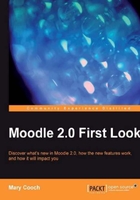
The word Moodle, although originally an acronym standing for (Modular Object (Oriented Dynamic Learning Environment), is also a verb. Moodling is the process of lazily meandering through something, doing things as it occurs to you to do them, an enjoyable tinkering that often leads to insight and creativity.
There is an irony here: with its roots in Social Constructionist Pedagogy (see http://docs.moodle.org/en/Philosophy), Moodle empowers students to manage their own learning: they can work at their own individual pace; collaborate with others to build on collective experiences and form new knowledge through active involvement rather than passive absorption. A Native American proverb (which has many variants) states:
Tell me and I'll forget
Show me and I may not remember
Involve me and I'll learn
And yet despite this, one of the most frequently requested features on Moodle has been a way to control the path of students' learning: how can we set our course so a learner can only progress to level 2 once they have reached a certain grade in Level1? How can we hide the Advanced work so they can't see it until they have completed the Basic work (in case—perish the thought—they might actually go, do the Advanced work and understand it ahead of the official schedule!)?
A workaround to controlling student access was made available for Moodle 1.9. It was known as "Activity Locking" and was a means whereby a teacher could set certain conditions on a task that the student had to meet before the next task became visible. With Moodle 2.0 this feature is standard, and is known as Conditional Activities. Whenever you set up an activity in your Moodle course, you now have the power to decide when to enable your student to move on.
This is essential for many situations, particularly in the commercial world. Imagine for example a Health and Safety programme where it's vital that procedures are carried out in a particular order. Or a language-learning course where students really need to understand the basics of the present tense before they can tackle the complexities of the imperfect subjunctive.
You can see the following screenshot of the setup screen of an assignment in one of our Moodle 2.0 courses. The student will not be able to tackle this assignment (indeed, not even see it) until they have made a post in an introductory forum:

In Chapter 6, Managing the Learning Path we shall consider how we can best make use of Conditional Activities, alongside another new arrival the ability for users to mark tasks as "done". This is the Activity completion tracking facility. Next to each item on your Moodle course page you will see a dotted check mark (tick). This can be either manually checked by the student if they feel they have finished a task (they can change their mind) or else the teacher can set it to be checked automatically once the student has actually completed the activity. You can see from the next screenshot that the activities Choose your learning style and Orientation quiz are marked complete. The lighter background denotes an automatic check while the grey background denotes a manual check.

Similarly, the new Course Completion feature enables teachers to set conditions for a whole course or set of courses to be marked as complete—again either dependent on certain grades being obtained, activities being completed or activities being manually marked off by the students themselves.